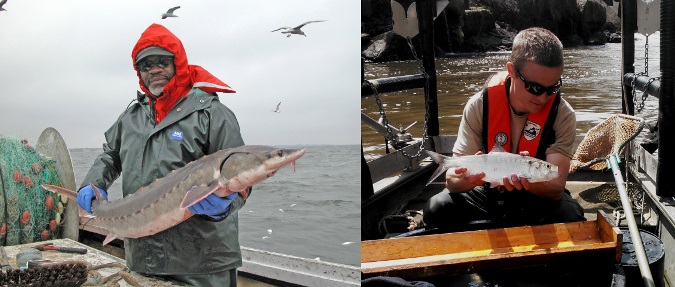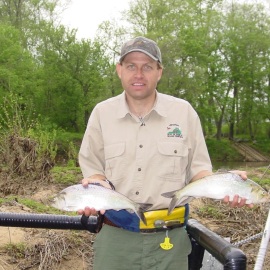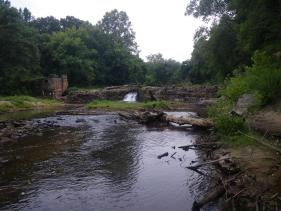
Colonial leaders got it right for fish … and people too. As far back as 1670, Virginia prohibited structures like dams that would hinder fish migrating up and down our rivers. Why? They recognized their future depended on the millions of delicious migratory fish swimming our coastal rivers. Fish biologist Albert Spells will tell you that feasting on Atlantic sturgeon saved the first permanent English colony in America at Jamestown.S
Flash forward to the 1900s, and the rivers paint a different picture. The growing cities and towns have built hundreds of dams and road culverts blocking fish from their spawning grounds. Commercial fishing has expanded rapidly to feed the region and the world. Fish numbers drop, and keep dropping.
Where does that put us today? Well much has changed on the Chesapeake Bay and the rivers that flow to it from Virginia. One change is a return back to that early wisdom. We are removing obstacles to fish migration so fish can reach their spawning habitat and produce new generations of fish. Our goal is to reverse the trend in declining fish populations and create truly sustainable fisheries.

Albert Spells with the U.S. Fish and Wildlife Service at the Virginia Fish and Wildlife Conservation Office in Charles City, Virginia and Alan Weaver, Virginia Department of Game and Inland Fisheries (VDGIF), have been working together for years, alongside the National Oceanic Atmospheric Administration, American Rivers, dam owners, local watershed groups and towns to re-open Virginia’s rivers to migratory fish like American shad and river herring. And restore our fishing heritage.

Over 1000 miles of river have been re-opened to migratory fish in Virginia in the past decade thanks to these collaborative efforts.
In 2005, the Embrey Dam (built in 1910) was removed, re-opening 106 miles on the Rappahannock River and gaining a full 186 miles of free-flowing river. American shad, blueback herring and striped bass have all been found upstream of the former dam.

After removing the Harvell Dam in 2014, over 127 miles of the Appomattox River, a tributary to the James River, were open to migratory fish for the first time in 130 years.

The Harvell Dam removal was a high priority for migratory fish restoration in Virginia because it was the first obstruction on the Appomattox, and therefore, a critical fish passage site. Just one year after it’s removal, hickory shad, alewife and blueback herring were found upstream of the former dam.
A strong fisheries can help generate a strong economy. And removing barriers to fish migration will allow a great number of fishes to recover – if we adhere to water quality and fishing regulations.
Albert and Alan will continue to work together to remove obsolete and hazardous dams, and install fish-friendly culverts that allow more water (and fish) to pass. Fewer roads and bridges will wash-out during high water events; fewer accidents will occur around obsolete dams and more fish will thrive in the rivers of Virginia.
And more people will enjoy the music of flowing rivers, enjoy fishing and boating, and know that beneath the water’s surface is a world of fishes that are fun to watch and good to eat.
